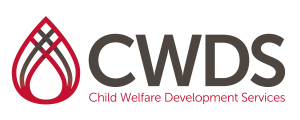CWDS Curriculum
Dealing with the Hard to Place Child
Level: Advanced Practice – Lineworker
Credits: 6
Intended Audience: New and experienced lineworkers and supervisors interested in expanding their skills in effectively working with the hard to place child
Intended objectives:
- To examine the history of the current “level” system operating in the California placement system, and how it impacts the success of a specific placement
- To review research related to the outcomes of placement, in an effort to avoid placement errors that undermine later life adjustment for children/youth
- To compile a list of descriptions that constitute those children/youth whom workers are experiencing as “hard-to-Place”
- To examine the “ingredients” of a placement that would be either suited to, or not suited to, children/youth with varied disorders: aggressive or violent behaviors; sexualized behaviors; neurological disorders.
- To review the various plusses and minuses of various placement options
- To identify the specific role of placements in meeting children’s “basic needs”
- To explore some of the ethical aspects of worker decisions with regarding to choosing placements for children.
- To work in a cooperative manner with other members in the class to seek solutions to current placement problems
Topics Include:
- Overview of the Level System
- Descriptions and Presenting Challenges of “hard-to-place” Children/Youth
- The Role of Placement in Meeting Basic Needs
- Research Review of Outcomes of Placement
- Ingredients of a “Therapeutic Environment”
- The Pros and Cons of Various Placement Options for Children With Specific Disorders
CalSWEC Competencies Addressed:
2.12 Student understands the dual responsibility of the child welfare caseworker to protect children and to provide services that support families as caregivers.
2.13 Student understands the principles of concurrent and permanency planning.
Posted In:Permanency: Reunification, Foster Care and Adoptions
Placement



